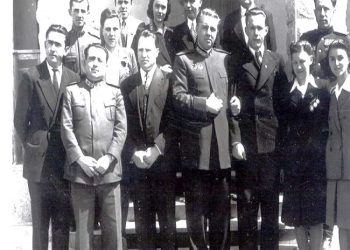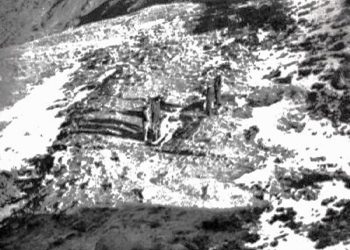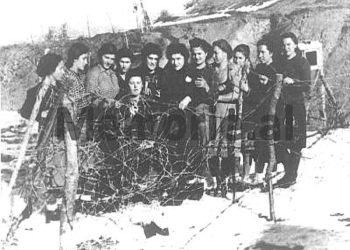From Bashkim Trenova
The twelfth part
INSTEAD OF THE PROLOGUE – A PROJECT, TWO MEMORANDA AND AN ANALYSIS
The project or the nativity of Ilia Garasanin – politician, prime minister of Serbia during the years 1852-1853 and 1861-1886:
MYTH-MYSTICISM, VICTIMOMANIA, RACISM AND SERBONOSTALGIA
ALBANIANS ACCORDING TO THE SERBS
(THE EASTERN CRISIS AND THE BALKAN WARS)
Memorie.al / “Serbs are descended from the Slavs, a large number of tribes who gave life to the Slavic peoples. Knowledge about the origins of the history of the Slavs is modest and not so clear. Their name appears for the first time in the 6th century AD, when Byzantine writers start talking about the Slavs….”! (Dushan Bataković, Milan St. Protic, Nikola Samardžić, Aleksandër Fotic. History of the Serbian People. L’Age d’Homme. Lausanne. 2005. Pg. 3.)
Continues from last issue
Viewed from different angles, the decisions to remove Kosovo and Metohija from Serbia, and all the means to implement this, changing the ethnic and religious balance in favor of the Albanian majority, cannot be considered otherwise than as an abuse with history, as the “appearance and creation of Albanian hegemony”, the point of view presented by some historians and publicists, who affirm the permanent and massive presence of Albanians in Kosovo since Antiquity, cannot be defended. (1)
1 – Radovan Samardzic, Sima M. Cirkovic, Olga Zirojevic, Radmila Trickovic, Dushan T. Batakovic, Veselin Djuretic, Kosta Cavoski, Anatasije Jevtic. Le Kosovo-Metohija dans l’histoire serbe. (Kosovo-Metohija in Serbian history). Slavica. L’Age d’Home. Lausanne 1990. Pg. 17.
2 – Right there. Pg. 18-19.
—
Simultaneously with the revolt of Patron Halil in Istanbul and the publication in 1731 of the decree addressed to those who were creating turmoil in the Empire and especially in Old Serbia and Macedonia, the Albanians, regardless of the measures of the authorities that intended to return them to their mountains, were spread in the Balkan lands, in groups of different importance, as herders, robbers or mercenaries in the service of various pashalars and beylers.
The wars of 1737-1739 and the uprising of the Serbian rajas provoked a new rift, allowing the Albanians to spread in many directions, precisely because the regular Turkish troops needed their help and they took advantage of these turbulent times to to act.
The newly arrived Albanians terrorized the people, stole cattle, attacked women and young girls, thus forcing the rajas to leave their homes to move to other regions.
When during the war against Russia (1768-1774), the country was subjected to a real anarchy, the acts of violence committed by the Albanians extended even further. Some tribal group’s occupied lands in Kosovo and Metohija, while others acquired lands, passing from here to neighboring regions….They started as dependent peasants, but when they became numerically the majority, they began to plunder, kill and rape you. (2)
1- Radovan Samardzic, Sima M. Cirkovic, Olga Zirojevic, Radmila Trickovic, Dushan T. Batakovic, Veselin Djuretic, Kosta Čavoski, Anatasije Jevtic. Le Kosovo-Metohija dans l’histoire serbe. (Kosovo-Metohija in Serbian history.) Slavica. L’Age d’Home. Lausanne 1990. Pg. 32.
2 – Right there. Pg. 125.
—
Russian diplomat and historian A.F. Giljferding, during his trip to Metohi in 1858, noticed that the Christian Serbs endured daily humiliations and various violence from the unrestrained and merciless Albanians and that the measures taken by the mayor “trying to suppress and punish Albanian arbitrariness “, had no effect, because his few gendarmes were recruited among Albanians. “But what can a single man with the best will in the world do in the midst of an armed mass, who have no idea of what laws and courts are, and who are accustomed to arbitrariness and tyranny, with a words, as a local proverb says, that fear God little and not the Sultan at all”. (1)
The official reports of the first consul of Russia in Prizren, Eugen Timajev – the representative of a power that was traditionally the protector of the Orthodox subjects of the Turkish Empire – complete the picture of the situation in Metohija and the extent of the suffering of the Serbian people in the second half of the years. The 60s. At the end of 1866, Timojev informed his government about the violence and abuses committed by the Albanians in the province of Peja. During the looting of some ten Serbian villages, they killed the men and raped the women, and even desecrated the graves of their ancestors.
The report of the Russian consul shows that the situation of the Orthodox Serbs was no different in the provinces on the other side of Sharr-Planina, in Tetovo, Dibër, Ohrid, Përlep and in the surroundings of Manastir.
Timojev has noticed that: “Albanian people occupy more and more lands where they settle and maybe soon they will play a role in the destinies of Europe, although they are mostly uncultured and almost wild.” (2)
1 – Radovan Samardzic, Sima M. Cirkovic, Olga Zirojevic, Radmila Trickovic, Dushan T. Batakovic, Veselin Djuretic, Kosta Čavoski, Anatasije Jevtic. Le Kosovo-Metohija dans l’histoire serbe. (Kosovo-Metohija in Serbian history.) Slavica. L’Age d’Home. Lausanne 1990. Pg. 143.
2 – Right there. Pg. 143-144.
—
The basic request of the Albanian League was the creation of a unique Albanian vilayet formed by the four existing vilayets, that of Shkodra, Ioannina, Kosovo and Manastir. These orientations were, at their core, completely anti-Slavic and anti-Serbian.
The leaders of the Albanian National Movement, emerging mainly from feudal environments, saw in the activity of the League a means to preserve the existing privileges…, the opportunity to be freed from taxes, for a three-way self-government and for a space for demographic expansion .
The connection was a tool of intimidation, thanks to which the integrity of the Ottoman state would be preserved. (1)
—
The terror exerted on the Serbs did not weaken during the entire time of the government of the Albanian League. Beginning in 1880, when its leadership severed all ties with the Porte, the situation of the Serbian population became even more difficult, because it had to pay taxes to both the Turks and the Albanians. Attacks on the territory of the Serbian state increased precisely at the time of the Albanian League, when the new borders of Serbia were still not well defended. After the Congress of Berlin, attacks by Albanians in Serbia increased; their gangs that looted and burned wherever they passed, reached as far as Kurshumli. On the way back they attacked all the Serbian villages on the Turkish side.
The period of rule of the Albanian League led to serious consequences for the Serbian people in Old Serbia….Violence against the Serbs was carried out on the basis of the political program of the League, a strategic goal of the Albanian national movement…The expulsion of the Serbs from the hearths theirs, through unprovoked intimidation, was done in accordance with the League’s political goal, a kind of religious and national duty, obligatory for all Albanians in the province of Kosovo. (1)
1 – Radovan Samardzic, Sima M. Cirkovic, Olga Zirojevic, Radmila Trickovic, Dushan T. Batakovic, Veselin Djuretic, Kosta Čavoski, Anatasije Jevtic. Le Kosovo-Metohija dans l’histoire serbe. (Kosovo-Metohija in Serbian history.) Slavica. L’Age d’Home. Lausanne 1990. Pg. 169-170.
—
The middle Ages knew many Serbian states, of which the most prestigious, without a doubt, is that of Njemanja. Having secured his hegemony in the Balkan Peninsula and emerging as emperor in 1345, he became one of the first states in Europe. It had access to several seas, from the Adriatic to the Aegean Sea, and extended to the south in Albania, Epirus, Thessaly, Chalkides, in a part of Thrace and Bulgaria. Wealthy and powerful, it enjoyed institutions founded on old Slavic customary law combined with Roman or Byzantine law. The Code of Stefan Dushan (1349-1354) marked the peak of his legislation.
The sovereign and his vassals competed in the establishment of monasteries and churches. The mercy was so great that one can talk about a help of Serbia in the rebirth of Christianity in the 13th and 14th centuries. Literature was devoted to the glory of Nemanja. The state and the people were in this era of victorious feudalism closer than anywhere else. (2)
—
The remaining Serbs in Turkey place all their hopes in Serbia and suffer more and more from incessant persecution. They were driven out, especially in Kosovo, by the Albanians who killed them, robbed them, burned entire villages, and confiscated the lands and forcibly Islamized the people. This violence reached the proportions of a real pogrom during the return of armed Albanian troops after the Turkish-Greek war of 1897, the Serbs began to lose territories that they considered their cradle, (especially Kosovo)
1 – Radovan Samardzic, Sima M. Cirkovic, Olga Zirojevic, Radmila Trickovic, Dushan T. Batakovic, Veselin Djuretic, Kosta Cavoski, Anatasije Jevtic. Le Kosovo-Metohija dans l’histoire serbe. (Kosovo-Metohija in Serbian history.) Slavica. L’Age d’Home. Lausanne 1990. Pg. 173-174.
2 – Radovan Samardzic. Le destin d’un peuple: les Serbes du XIVe au XIXe siècle. (The fate of a people; Serbs from the XIV-XIX centuries). Revue des Etudes Slaves. Year 1984 /56-3/. Pg. 345.
The history of the Serbian people has been marked by its attempts to play a role outside of its own forces and, perhaps, for nothing. These efforts have left a devastating mark. Seeking to achieve the impossible, the Serbs were overwhelmed. By rising against the established order, they have pulled the chestnuts out of the fire for others.
At the same time, they are weakened by being exposed to general outrage as guilty of disorder. Those who, in the course of history, have stood by instead of fighting have benefited from their successes. They have earned in the eyes of others, the name of incorrigible disturbers, violators of the order necessary for every age. Ultimately, Serbs have become impatient with the politics of their neighbors and their ethnic forefathers. (1)
****
Sanja Boskovic – Master of Conferences at the University of Poitiers, director of the Department of Slavic and Oriental Languages at UFR Literature and Language:
The epic cycle dedicated to Kosovo reflects, in particular, the collective memory, which as such testifies both to historical facts and to their symbolic value. In this sense, it can be said that the cultural myth of Kosovo, being centered on the historical core, has become the memorized history of the Serbian people: it expresses and distributes the collective view of historical facts. (2)
This is what Hegel describes as the spiritual consciousness of people, and which, subsequently, will influence social life, religious life, and will mark with its imprint the entire collective being. (1)
1 – Radovan Samardzic. Le destin d’un peuple: les Serbes du XIVe au XIXe siècle. (The fate of a people; Serbs from the XIV-XIX centuries). Revue des Etudes Slaves. Year 1984 /56-3/. Pages 357 – 360.
2-Sanja Boskovic. University of Poitiers. The cultural myth of Kosovo: between history and poetry. Mémoire(s), identité(s), marginalité(s) dans le monde occidental contemporain, 9 | 2013.
Page 1. Electronic edition. URL http://journals. openedition. org/mimmoc/1080. DOI: 10.4000/mimmoc.1080. ISSN: 1951-6789. Publisher – University of Poitiers.
****
Slavenko Terzic – historian, member of the Serbian Academy of Sciences and Arts: The concept of a large Albanian state did not appear as an authentic expression of the Albanian national movement. Until the beginning of the Great Eastern Crisis (1875-1878), Albanians, unlike other nations, – Serbs, Greeks, Bulgarians, Romanians, did not try to create a national state through a modern political organization. A regional and religious identity was predominant among Albanians.
Disorganized forms of disobedience to the central authority were the only expressions of the conservative Muslim feudal lords’ resistance to the reforms that the Ottoman Empire, under pressure from the great European powers, tried to implement during the 19th century. It is known that the Bosnian and Albanian feudal lords were the most ardent defenders of the Islamic theocratic society and made the biggest and strongest resistance to the efforts of the central government in Istanbul to somehow establish order in the functioning of the state.
This attitude of the Albanians was not simply the result of the economic, social and cultural underdevelopment of the Albanian society, or the absence of even embryonic modern political elite. With their patriarchal, oriental Asian-type society, they constituted the main obstacle to the Europeanization of this part of Europe in the 19th and 20th centuries. At the beginning of the Great Eastern Crisis, the Albanians were in the vanguard of the Turkish regular and especially irregular troops (mercenary) and committed many atrocities in the battles against the Christian insurgents. During the Crisis, the Albanians never joined the liberation movements of the Balkan Christians.
1 – Sanja Boskovic. Université de Poitiers. Le mythe culturel de Kosovo: entre l’histoire et la poésie. Mémoire(s), identité(s), marginalité(s) dans le monde occidental contemporain, 9 | 2013. Pg. 2. Édition électronique. URL http://journals. openedition. org/mimmoc/1080. DOI : 10.4000/mimmoc.1080. ISSN: 1951-6789. Éditeur-Université de Poitiers.
It is quite clear that the Albanian League of 1878 and its political program were not expressions of the original liberation efforts of the Albanians, who, however, were late compared to other peoples. The League was a tool, primarily in the hands of the Turks, and later in the hands of other powers, for the preservation of the Ottoman Empire.
Devastating Turkish military campaigns allowed the influx of Albanians from their regions of origin to the lands of their Slavic and Greek neighbors. Only in the 18th century, masses of Albanian shepherds from the hilly areas of their country began to descend on the fertile lands of Kosovo and Metohija populated overwhelmingly by Orthodox Serbs, as well as in the regions of today’s Western Macedonia, from Skopje in Bitola, undoubtedly populated by Serbian and Macedonian Slavic populations.
In addition to the massive and almost regular atrocities that characterized this occupation of the former Serbia, there were many other ways to destroy the compact Serbian ethnic body (forced Islamization, various forms of theft, looting, destruction of religious buildings, and many forms of other terror).
The biggest changes in the ethnic structure of the population of this part of Old Serbia occurred from the mid-18th to the mid-19th century and from the Congress of Berlin in 1878 to the liberation of these regions from Turkish rule.
The fact that Prizren, a city in Old Serbia and on the outskirts of ethnic Albanian territory was chosen as the site of the formation of the Albanian League in 1878, testifies to the extremely expansionist nature of Albanian intentions. It was here that a powerful obstacle had to be created for the further strengthening of the Serbian liberation movement in Old Serbia. And it is no coincidence that the formation of the Albanian League did not take place in Albania; let’s say in Durres, Vlora, Tirana or any other city.
Since the time of the Great Eastern Crisis (1875-1878) the neighboring regions of Albania, such as Kosovo, Metohia, today’s Western Slavic Macedonia and Northern Epirus, were populated with Albanians who settled an masse, mainly in the 18th and 19th centuries, and started are described as “Albanian lands”. Thus, the Albanian League undertook to prevent the liberation of the “Albanian lands” of the neighboring peoples.
The organized ethnic cleansing of the non-Albanian population from the declared “Albanian territories” began immediately after the Berlin Congress. During the period 1876-1912, about 150,000 Orthodox Serbs were forced to leave Old Serbia, i.e. the province of Kosovo. Similar ideas can be found in Ismail Kemal Bej Vlora, the prime minister of the first Albanian interim government. As prime minister, he demanded that the Great Powers cleanse the “Albanian lands” of Slavs and Greeks. He also praised the Albanians who drove out the “Christian Slavs” with weapons and violence.
After the First Balkan War of 1912, in which Albanians fought on the Turkish side, the Conference of Ambassadors in London, in 1913, defined the borders of the newly created Albanian state, “Great Albania”, with the central idea “all Albanians in one state”; not only does it represent a late example of 19th-century national romanticism, but it also challenges existing internationally recognized borders, threatens the stability of all of Southeast Europe, and threatens to provoke a new third Balkan war.
The ambition to establish a Greater Albania, ethnically pure, at any cost, represents a very big anachronism. The Albanian political and intellectual elite clearly suffer from a great deficit of European logic. (1)
—
Kosovo and Metohija, two central regions of the immovable Serbia, are the very essence of Serbian spiritual, cultural and state identity from the middle Ages to the present day. The fertile and mild plains of Kosovo with a sweet climate and water sources, with the high mountain ranges bordering Albania, have been a blessed environment for a successful development, for the highest achievements among all the territories of medieval Serbia.
The cultural and demographic strength of the Serbs is best reflected here by the presence of 1,500 monuments of Serbian culture registered to date. Many prominent Serbian noble families lived in these regions, such as the families of Branković, Hrebeljanović, Mužić, Vojinović, some of which were precursors of Serbian dynasties.
– Slavenko Terzic. Le Kosovo, La Question Serbe et Le Projet De Grande Albanie. (Kosovo, the Serbian issue and the project of greater Albania). Rastko Graçanica-Peja project. 17. 04. 1999.
A large number of noble castles existed throughout Kosovo with rich aristocratic life within their walls. They were also meeting places of the Serbian nobility, centers where important political and other decisions were made, and places frequented by foreign envoys and special guests of foreign noble ruling families.
The battle of Kosovo has taken on a mythical dimension from an important historical event, greatly influencing the subsequent fate of the entire Serbian nation. Serbian epic poetry is very rich and the cycle of poems dedicated to Kosovo is a gem of this treasure during the years of captivity under the Turks until the 19th century, and, speaking of Kosovo and Metohija, until 1912. Memorie.al
The next issue follows




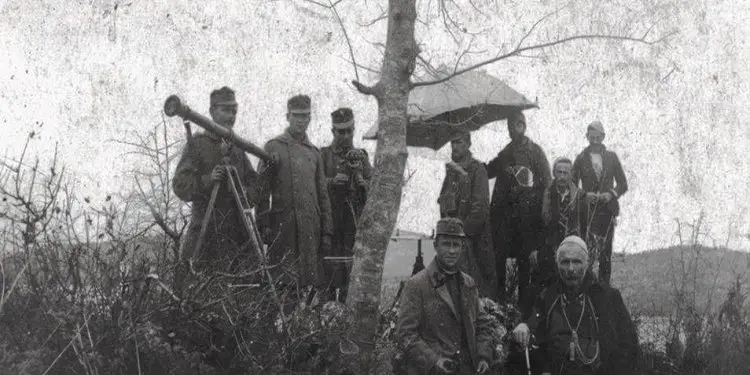
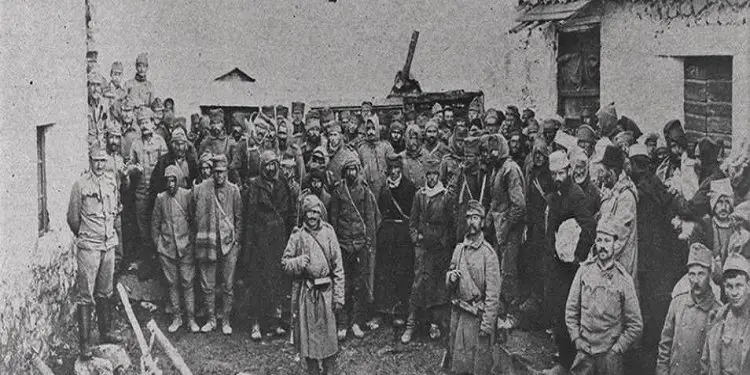
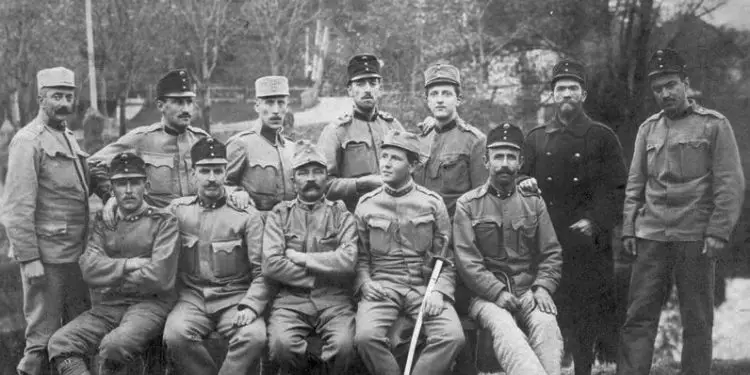
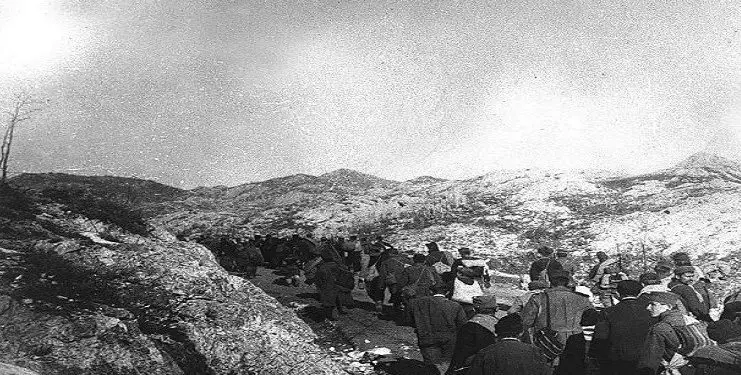

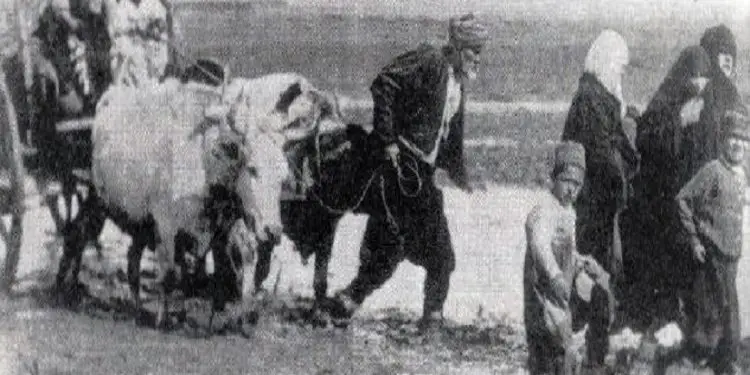
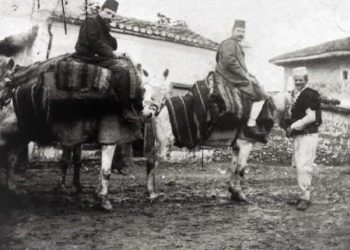
![“When the camp commander, in the presence of the group accompanying him, said to the convicted journalist: ‘Why did you exchange this beautiful profession for the Spaç wagon [mine cart/labor], he [the journalist]…”/ The unknown story of January 10, 1983](https://memorie.al/wp-content/uploads/2025/10/Spaç_Prison_Mirditë_Albania_–_Buildings_2018_08-350x250.jpg)
